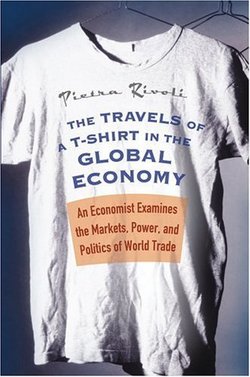. . . , the marketer’s fundamental task is not so much to understand the customer as it is to understand what jobs customers need to do — and build products that serve those specific purposes.
Marketers who do this well can build what we call “purpose brands” — ones that become so tightly associated with the job they perform that they become inextricably linked to it. Most of today’s most successful brands — Crest, Starbucks, Kleenex, eBay and Kodak, to name a few — started out as purpose brands.
. . .
Federal Express illustrates how successful purpose brands are built. A job had existed practically forever: the “I need to send this from here to there — as fast as possible with perfect certainty” job. Some U.S. customers hired the Postal Service’s airmail; a few desperate souls paid couriers to sit on airplanes. But because nobody had yet designed a service to do this job well, the brands of the unsatisfactory alternative services became tarnished when they were hired for this purpose. But after Federal Express specifically designed its service to do that exact job, and did it wonderfully again and again, the FedEx brand began popping into people’s minds.
This was not built through advertising. It was built as people hired the service and found that it got the job done. FedEx became a purpose brand — in fact, it became a verb in the international language of business that is inextricably linked with that specific job.
Purpose brands create enormous opportunities for differentiation, premium pricing and growth. But reckless management can erode the equity of these brands. There are only two ways to extend brands without destroying them: Marketers can apply the brand to different products that address the same job. Or they can apply the brand to endorse the quality of products that do other jobs and create new purpose brands that benefit from the endorser quality of the original brand.
Marriott followed this strategy in leveraging its brand across the jobs for which hotels might be hired. It built its hotel brand around full-service facilities that were good to hire for large meetings. When it extended its brand to other jobs for which hotels were hired, it adopted a two-word brand architecture, appending to the Marriott endorsement a purpose brand for the different jobs its new hotel chains were intended to do. Hence, individual business travelers who need to hire a quiet place to get work done can hire Courtyard by Marriott — the hotel designed by business travelers for business travelers. Longer-term travelers can hire Residence Inn by Marriott, and so on. Even though these disruptive hotels were not constructed and decorated to the same standard as full-service Marriott hotels, the new chains actually reinforce the endorser qualities of the Marriott brand because they do the jobs well that they are hired to do.
For the full article, see:
CLAYTON M. CHRISTENSEN, SCOTT COOK and TADDY HALL. “MANAGER’S JOURNAL; It’s the Purpose Brand, Stupid.” The Wall Street Journal (Tues., November 29, 2005): B2.

